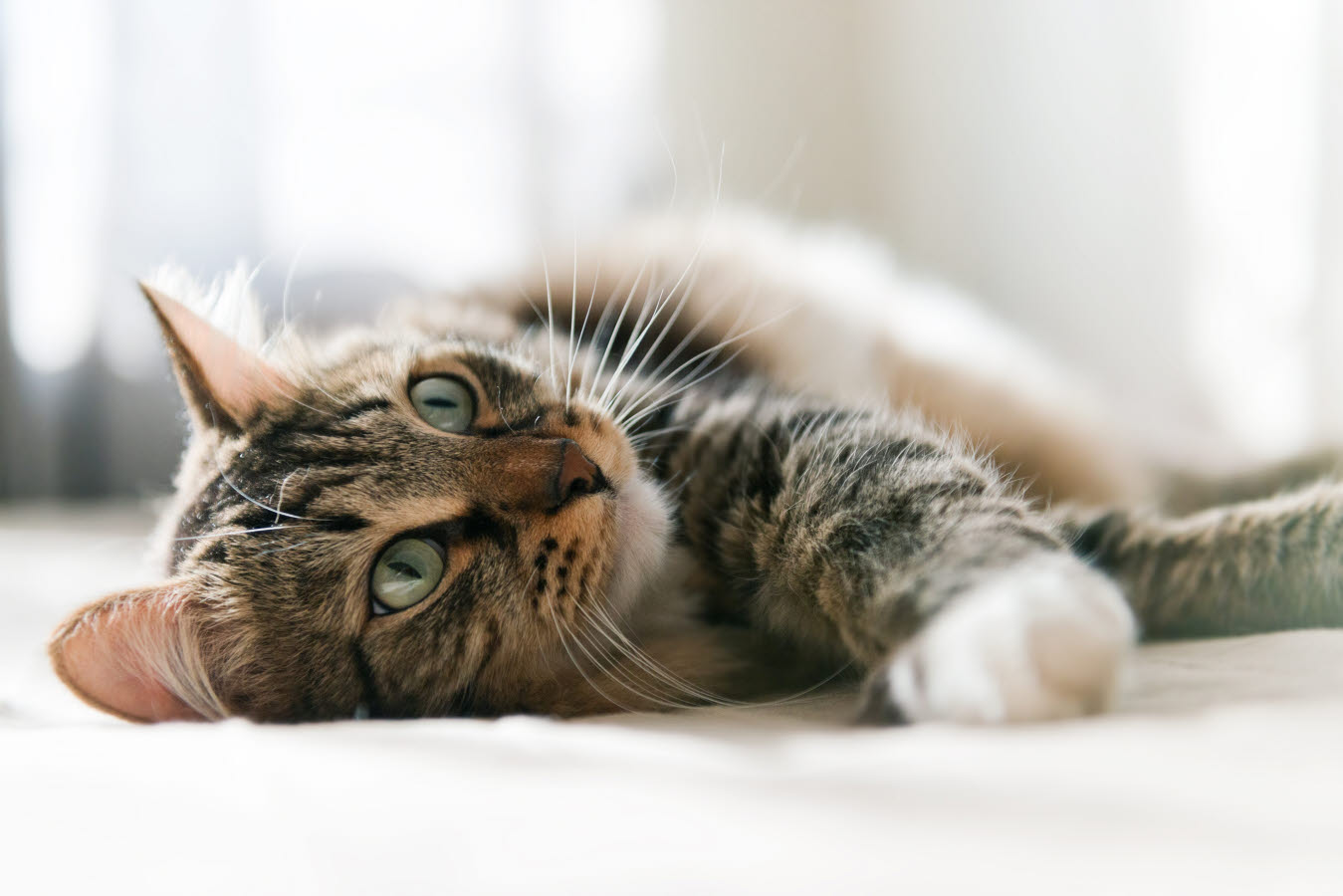Hyperthyroidism in cats

Hyperthyroidism (overactive thyroid glands) is a common disease seen in older cats.
The thyroid glands are situated in the neck and are responsible for releasing thyroid hormone. This hormone is needed for many different processes in the body, including metabolism and heart function and therefore, an increase in its production can result in dramatic clinical signs. If untreated, hyperthyroidism can make your cat seriously unwell.
Hyperthyroidism commonly affects middle-aged to older cats and is rarely seen in cats under the age of seven years.
What causes hyperthyroidism in cats?
Most cases of hyperthyroidism in cats are caused by a benign (non-cancerous) change in the thyroid glands. The change commonly occurs in both the thyroid glands and is referred to as ‘nodular hyperplasia’. The underlying cause of this form of the disease is currently unknown.
Less than 1-2% of hyperthyroidism in cats will be caused by a malignant (cancerous) tumour.
Signs your cat has hyperthyroidism:
- Weight loss
- Normal or increased appetite - many cats are ravenous
- Poor coat quality or appearance of an unkempt coat
- Increased vocalisation and hyperactivity, restlessness
- Increased thirst and urination
- Increased heart rate
- Vomiting and mild diarrhoea in some cases
You should contact your veterinarian if your cat is exhibiting any of these symptoms.
If untreated, hyperthyroidism can lead to severe changes to the heart wall and heart failure. It can also cause hypertension (high blood pressure), and this can cause damage to organs, including the eyes, heart, kidneys and brain.
Chronic kidney disease is another disease that is common in older cats, and the two conditions often occur together. If a cat is suffering from these diseases, careful management is critical as the treatment for hyperthyroidism can sometimes have adverse effects on kidney function.
Diagnosis of hyperthyroidism
A blood test to measure the thyroxine (T4) concentration is usually all that is required to confirm a diagnosis of hyperthyroidism. Occasionally additional tests may be needed (such as measurement of ‘free T4’ in the blood). Some cats will have enlarged thyroid glands although this may only be noticed via careful palpation by your veterinarian. Liver enzymes are also commonly increased with hyperthyroidism.
Blood and urine tests are required to help rule out other problems (such as kidney disease) and a blood pressure measurement should be taken in all cats suffering from hyperthyroidism. An electrocardiogram (ECG – electrical tracing of heart activity), and a chest X-ray or ultrasound of the heart is recommended if heart disease is suspected.
Treatment options for thyroid disease in cats
The good news is that the majority of cats with hyperthyroidism can be treated successfully and will make a full recovery. Treatment of hyperthyroidism depends on how well the kidneys and the heart are functioning.
In most cases, treatment involves life-long daily (or twice daily) medication and regular blood, urine and blood-pressure tests. If your cat can’t take oral medication your veterinarian can arrange a compounded medication that you can apply to your cat’s ears (a transdermal medication).
Other options for treatment include surgical removal of the affected tissues (thyroidectomy) or injection with radioactive iodine (I-131). The benefit of these treatment options is that they are usually curative and you should speak to your veterinarian about these options and to see if they are available and suitable for your cat.
If you are worried about your cat or think they may be showing symptoms of hyperthyroidism you should contact your veterinarian for advice.
